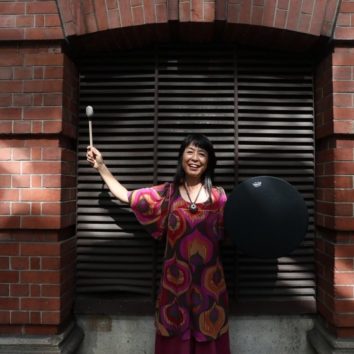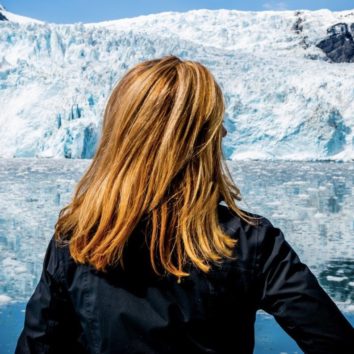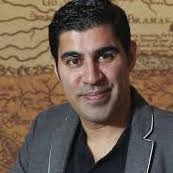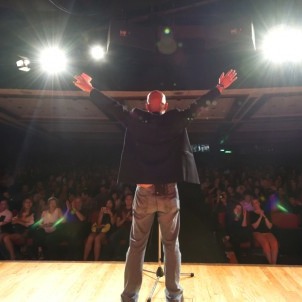
- Nature therapy, such as forest bathing – mindfully walking through nature – can help to reprogram our overstimulated minds and bodies
We walk in silence slowly through the forest in Gunung Mulu National Park, Malaysian Borneo, and in the stillness, nature comes into sharp focus – the thick moss on tree trunks, the latticework of fine vines, a lizard that scuttles across the path. There’s the gentle gurgle of the Melinau River and the chatter of birds.
Without the intrusion of conversation, the vividness of the jungle becomes surreal, dreamlike. I begin to relax, my shoulders drop.
This is how our forebears walked through the forest thousands of years ago – slowly, attentively, listening for the sound of water, possible food, smelling and touching, all the senses engaged. And walking through the forest in a similar manner helps to reprogram our overstimulated minds and bodies, and bring us back to optimal health, says Professor Gerard Bodeker, chairman of the Mental Wellness Initiative for the non-profit Global Wellness Institute.
“Attentiveness to the whole forest environment has been part of our evolutionary history, and coming back into nature in a way that is attentive connects us to our deep ancestral programme,” says Bodeker, who is also the director of Ayus Wellness, a wellness experience company founded in the rainforest in Mulu, Borneo.
The idea of nature therapy has been around a while. The American biologist Edward Wilson coined the term “biophilia” in 1984 to explain the connection humans seek with the rest of life. Also in the 1980s, the Japanese developed the practice of shinrin-yoku or “forest bathing”, which is all about taking in the atmosphere of the forest during a leisurely walk.
Since then there has been a growing body of research that examines the immersive effects of being in nature and its transformative effects on mental health, general well-being, reduction in depression and anxiety, improvement in sleep and overall resilience.
“That comes not through hiking or jogging through a forest, but from walking very slowly, about 1km an hour, meandering through, as our ancestors would have done,” Bodeker says.
Gunung Mulu National Park, a Unesco World Heritage Site, is an ideal place to indulge in some serious nature therapy, but you don’t need to go all the way to Borneo – those in Hong Kong, for example, have it right on their doorstep.
“Hong Kong is uniquely blessed among mega-cities in having so much nature around – no one is far from a natural area. A lot of people will be jogging through it, but try an immersive walk through it,” Bodeker says.
We have completed the snails-pace walk through the forest and are sitting on the wooden deck overlooking Clearwater Pool, where the water is indeed so clear you can see the sandy bottom. The pool is filled with cool water that seeps through a limestone rock face. Beyond that is a vast cave system, one of the largest in the world.
Bodeker explains that, when a group of Taiwanese Buddhist monks visited the pool a few years previously, they said they saw an extraordinarily powerful spiritual light coming from where the water seeped through the rock face. I squint, but can’t see the spiritual light. However, I can feel the serenity of the place.
“It’s a special, restful place. We decided to make it the epicentre of the Ayus Wellness programme,” Bodeker says.
Ayus Wellness was launched in June at the Mulu Marriott in Borneo, co-founded by the hotel’s owner, Robert Geneid, and Bodeker, a Harvard-trained public health specialist. At the heart of the programme, which the founders hope to roll out at spas in Izu, Japan and Java, Indonesia in the next couple of years, is the focus on immersion in nature.
“I don’t think you need an aromatherapist, a crystal therapist and the like. Nature does more than all of them put together,” says Bodeker, who was working on a report for the Global Wellness Institute when they conceived the idea.
The report draws together the most recent research on mental wellness. Of particular interest is the section on neuroplasticity – when wellness habits prompt our brain to change and rewrite itself.
Simply put, although our brain is more malleable when we are young, even in adulthood it is still possible to change. This means the negative effects of past neglect and trauma can be mitigated, or even erased, by boosting neuroplasticity. Among the ways of doing this is spending time in nature – which is at the core of the programme – as well as meditation, massage, relaxation and sleep.
All these elements are woven into the Ayus experience – there’s plenty of fresh turmeric in the curries at dinner, and guests enjoy daily shots of pegaga (centella asiatica) juice, a herb known to improve memory and cognition; there are daily yoga and meditation sessions out in nature.
But the absolute highlight has to be the rainforest itself. For those with a head for heights, the best way to enjoy it in Mulu has to be on the canopy walk.
The Skywalk in the Gunung Mulu National Park is 480 metres long, making it the world’s longest tree-based canopy walk. The narrow wooden bridge is 25 metres above the forest floor and takes you directly through the lush canopy; there are birds, butterflies, someone spots a pygmy squirrel, and all around the deafening cry of the cicadas.
Bodeker is walking behind me. He’d advised us to take it slowly, to absorb the experience fully. He slips some way behind and I assume he’s making the most of shinrin-yoku, a practice that is said to boost the immune system, reduce stress and blood pressure, and improve mood and sleep. We get to the end of canopy walk and there’s no sign of him – perhaps even our slow pace was too fast.
Finally, he emerges. No, he wasn’t deep in shinrin-yoku, he has a fear of heights. Hats off to the professor – even acrophobia couldn’t keep him out of the forest.
Original Link: SCMP







